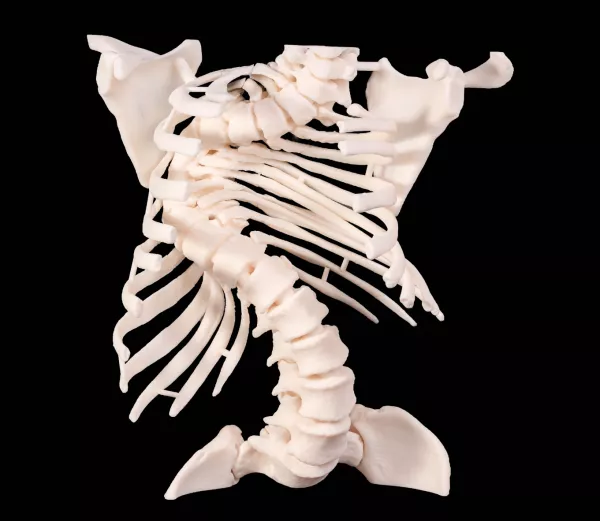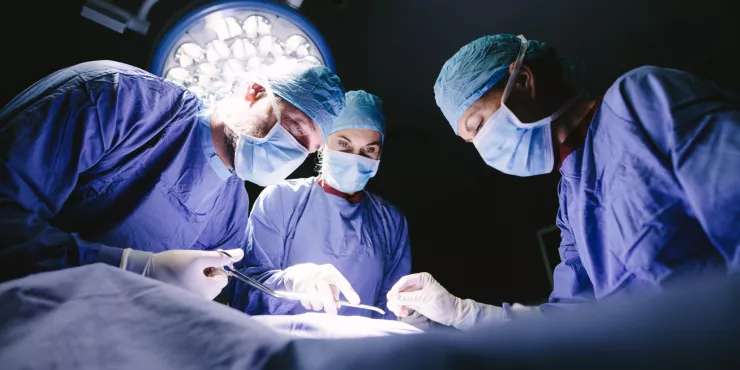3D modeling and printing has been around since the 1980s, with use of the technology in healthcare growing year on year. Now, 3D printing for orthopedic, cardiac, neurosurgery etc. is becoming common practice for many surgeons in all specialties dealing with increasingly complex cases across the world. With increased use of the technology, there are more opinions than ever on its value, usability and usefulness in surgery.
So how can you tell the facts from fiction? Don’t worry – we’ve broken down some of the most common myths versus reality below, so that you can make up your own mind.
1. “3D anatomical models don’t add enough value”
This is a typical misunderstanding of surgeons who haven’t tried 3D printing before. The experience of an increasing number of surgeons around the world who now rely on patient-specific 3D models for surgical planning is quite the opposite. Indeed, there is a growing body of published medical study data that is quantifying the transformative benefits of the use of 3D printed models for surgical planning.
In a recent study of 100 patients, amazingly 52% of surgeons reported that they changed their plan for a complex surgery when they used a 3D model during planning, with a further 47% reporting the models helped them confirm the optimal plan much faster and with more certainty, compared to relying solely on 2D MRI and CT images. Planning procedures aided by 3D models leads to an average reduction of 62 minutes per case, and an average reduction of stay in hospital for the patient of 16%.
2. “3D printing is too expensive”
This statement would have been true more than a decade ago, when 3D printers were both expensive to buy and use, but with recent technology advancements some of the highest quality 3D printers cost as low as $5,000 and can sit on a desk in a lab or even in a doctor’s office, as opposed to needing an expensively fitted out 3D printing laboratory.


Other options to surgeons include outsourcing the process of transforming 2D images into 3D printable models. This option removes the barriers to entry by not needing to invest in equipment, staff and resources to get started. Similarly, processes that just a few years ago would have taken a specially trained engineer hours to complete can now be performed almost instantly with AI. This has revolutionized 3D print labs across the world, reducing the ‘hands on’ time per model by hours – increasing output and quality without increasing costs.
3. “It takes too long to get a 3D anatomical model”
Until recently, the typical experience of a surgeon ordering a 3D printed model was that it could take weeks to arrive. This extensive turnaround time meant that 3D printed models could only be considered for a small number of surgical procedures with long leadtimes.
The cause of this long time delay was only in part due to the speed of 3D printers. The primary delay was that the process of turning 2D MRI and CT images into 3D print files took many hours and required highly skilled biomedical engineers to do the work. Right now, it is possible to automatically turn 2D images into 3D print files in a matter of minutes and for models to be printed at the hospital in a few hours. Therefore, 3D printed anatomical models can be used for most surgical procedures even in the most time-sensitive of cases.
4. “We’ll need to invest in lots of equipment and staff to get 3D printing in our hospital”
In the US today, even though the adoption of 3D printing is growing rapidly, still only around 10% of hospitals have 3D printers. However, this should not be a barrier for using 3D printed models for surgical planning. Rather than ordering the model from an in-house 3D print lab, the surgeon can simply order the model from a skilled 3D printing company, just by sending or uploading their patient’s MRI or CT scan. Then the model arrives by courier on the surgeon’s desk in as little as 72 hours.* An added benefit to outsourcing 3D printing is that the surgeon will benefit from the latest technologies and materials without having to update, upgrade or purchase new equipment.
5. “3D printers can only produce small parts of anatomy”
The size of the anatomy that can be printed has been limited by the volume of the 3D printers available. Today, with technology advancements, many 3D printers can print much larger anatomical structures, such as a whole spine and rib structures in one piece, which makes 3D printing an increasingly essential capability for surgeons treating complex cases around the world.





